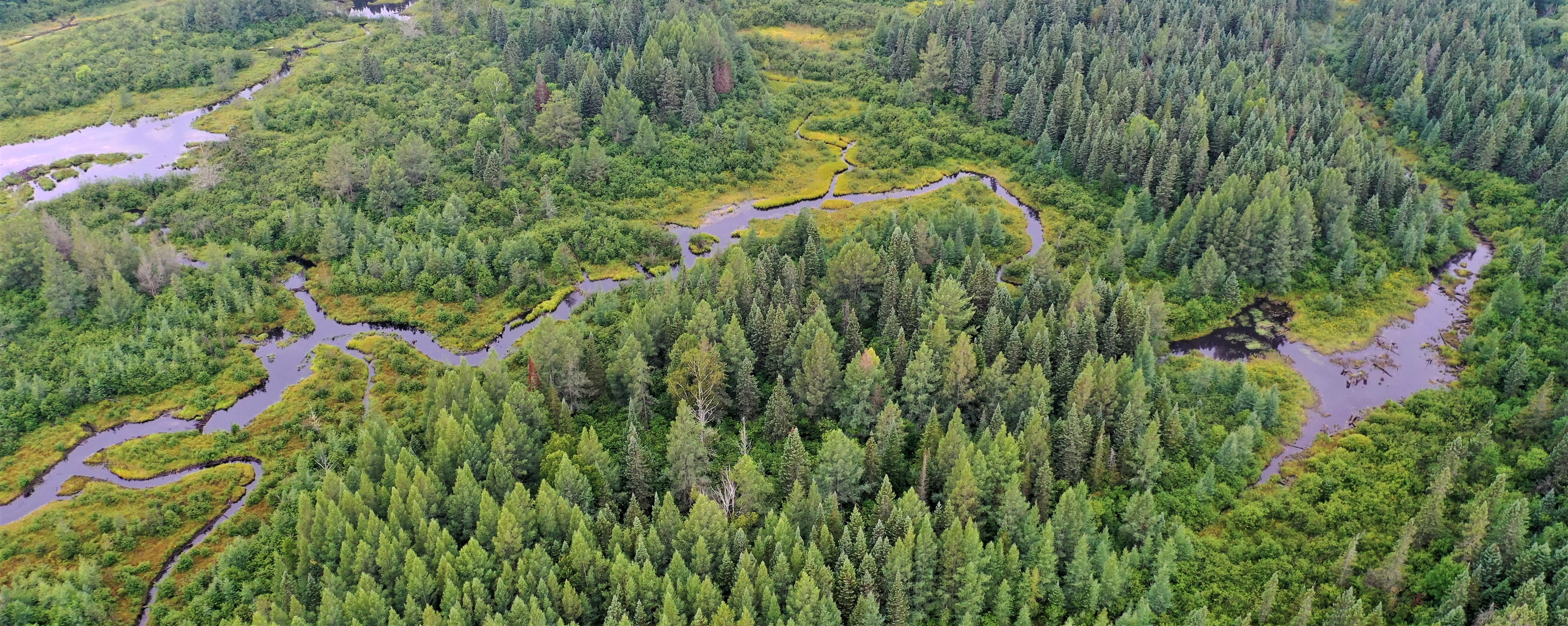The web Browser you are currently using is unsupported, and some features of this site may not work as intended. Please update to a modern browser such as Chrome, Firefox or Edge to experience all features Michigan.gov has to offer.
Embracing the climate solution that surrounds us
May 06, 2024
Today’s MI Environment story, by Scott Whitcomb, director of the Office of Public Lands at the Michigan Department of Natural Resources, is from the State of the Great Lakes report. To keep up to date on what the State of Michigan is doing to implement the goals of the MI Healthy Climate Plan and recently enacted clean energy legislation, register by May 8 for the 2024 MI Health Climate Conference on May 16 and 17 in Lansing.

Conservation of lands such as the headwaters of the Manistee River in their natural state offers climate benefits by sequestering carbon dioxide and providing habitat for wildlife. Photo courtesy of Michigan Natural Features Inventory.
The abundance, resilience, and accessibility of our natural resources are foundational to Michigan’s economy and Michiganders’ well-being. That foundation is under threat from the disappearance of nature, climate change, and inequitable access to the outdoors. Our natural resources are also a vital solution to mitigating and adapting to a changing climate.
Gov. Gretchen Whitmer has set a goal of reducing greenhouse gas emissions by 52% from 2005 levels by 2030 through the MI Healthy Climate Plan. The plan’s “Roadmap to 2030” strategy identifies conserving 30% of Michigan’s land and water by that milestone year – “30 by 30,” for short – as critical to achieving the goal. Similarly, the administration of President Joe Biden has embraced these principles and ideas as the “America the Beautiful” initiative.
Michiganders have long enjoyed and supported shared conservation areas, including national and state forests and parks, regional and community parks and open spaces, nature preserves protected by land trusts and similar organizations, and many others. These lands currently represent about 24% of the total area of the state, mostly in the Upper Peninsula and northern Lower Peninsula. Similarly, roughly 19% of the Great Lakes area within Michigan’s jurisdiction has been protected through either federal or state designation, such as the Thunder Bay National Marine Sanctuary. Privately owned lands using conservation practices or management plans can voluntarily contribute toward the 30-by-30 goal in the short term.
Michigan is well along the path toward the 30% goal with help from a variety of organizations, agencies, and tribal governments already implementing or funding conservation across the state. These conserved areas protect and provide access to millions of acres of forests, wetlands, streams, and lakes. As a result, future generations will enjoy the benefits they provide: habitat for fish, wildlife and plants; natural spaces for fishing, hunting, and other outdoor recreation; clean air and water; carbon storage; and a robust natural resource and outdoor recreation economy.
Fully meeting our goals while providing valuable services to people requires that Michiganders work together across the state. The Michigan Department of Natural Resources (DNR) is teaming up with partners including The Sault Tribe of Chippewa Indians and The Nature Conservancy to build a strong statewide coalition among nongovernmental organizations and state, federal, tribal, and local governments to achieve the 30x30 goal. The DNR and partners kicked off the effort at a fall 2023 summit to create energy and enthusiasm, catalyze support with conservation partners, and start building the plan.
Michigan needs to make the most of opportunities to look at conservation broadly to implement more natural solutions on the ground, from planting more trees in urban areas, to increasing regenerative agricultural practices, to conserving more land in areas where nature is hard to find. Through innovative and collaborative partnerships, Michigan can meet the challenge of reducing greenhouse gas emissions to meet the 2030 goal while maintaining or increasing the quality of life for all Michiganders.
Scott Whitcomb serves as director of the Office of Public Lands in the Department of Natural Resources, which uses our public land to innovate conservation solutions for higher-level outcomes around climate, energy, public health, green infrastructure, job creation, and placemaking. He is also an avid user of public lands and participates in many outdoor activities in Michigan and beyond.